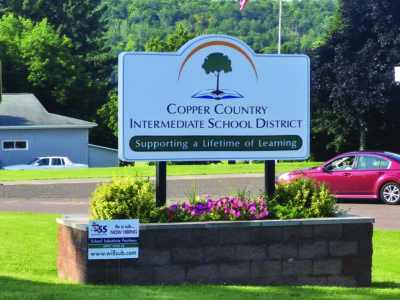Diggin’ in
Archaeology continues at Delaware

Photo courtesy of Tim Scarlett Michigan Tech’s Archaeology field school took the woods at the Delaware mine to unearth a 19th century blacksmith shop that will be showcased on the Delaware Mine’s walking tour.
KEWEENAW COUNTY – A student team from the Michigan Technological University’s Social Science Department successfully completed another summer archaeology field school at the Delaware Mine site, said Tim Scarlett, associate professor of archaeology and anthropology.
Scarlett said Bob and Laurie Sullivan, who own the Delaware mine, and their staff, asked Michigan Tech to investigate two building foundations on the property, one of which they thought to have been a blacksmith shop. The other building’s purpose was not known before the dig.
“We can now confidently describe the life history of these two buildings,” said Scarlett. “We still need to spend the fall studying the artifacts we recovered, of course, but we can already describe the construction, use, and abandonment of both buildings.” The blacksmith shop was built with three forges that allowed from three to six smiths to work sharpening tools and fabricating equipment for the mine, and fixing things that needed repair.
Over seven weeks, the team of seven students excavated nine different areas within the two buildings, with additional survey and testing around the site, Scarlett said. They also visited ancient copper mining sites and historic and modern blacksmith shops and metal working sites in the area. These included the blacksmith shop at Fort Wilkins, which Michigan Tech students had excavated in the 1990s in support of the fort’s plan to reconstruct and interpret that building.
A visit to the Quincy Mine blacksmith shop, which isn’t currently open to the public, was particularly helpful to the team trying to understand the forges they’d excavated. The students also spent time studying the old Hancock High School metal shop, which Superior Fab Lab and Keweenaw CAPE are collaborating to transform into a new public maker space in the Hancock Community Hub.
Scarlett said the students were able to see the continuous evolution of metal working jobs and industries in the Keweenaw from ancient and historic times into the modern day.
“Emerging studies show that Native Americans invented humanity’s first metallurgy here in the Copper Country, and continued mining and making copper items through millennia, up to the rise of industrial mining,” Scarlett said. “Blacksmiths spread into the Lake Superior region during the fur trade and the number increased dramatically during the days of industrial mining.”
The smiths working at the Delaware and other shops during the 1860s and 1880s saw their jobs evolve, said Scarlett. “They were skilled smiths doing all types of metal work. Over this period, their job began to split into different specializations we know today — mechanics, machinists, welders, farriers, and different specialists in art and industry.
“At the same time, consumers like miners at Delaware could start to order a dizzying array of inexpensive factory-made metal tools and products from mail order catalogs, signaling the rise of disposable consumer culture. Industries and communities wanted fewer and fewer maintainers to fabricate or repair metal items because new parts were so inexpensive.”
The field school at Delaware has been ongoing since June, 2023, when students began excavating at a mined-out vein, where a trench was opened. The field school was launched as a multiyear program exploring both Native American and European copper mining and life in the region. They are searching for clues and artifacts that hopefully will shed light on the people who originally mined the location and when they were there. The trench that has been opened is a continuation of the vein, said Carl Blair, professor of history and anthropology, and one of the faculty leaders of the project in 2023 and 2024.





